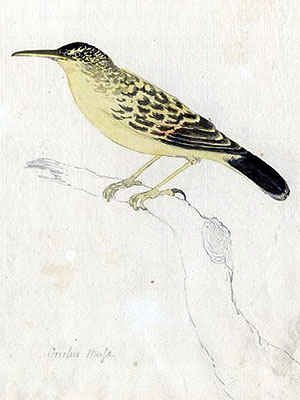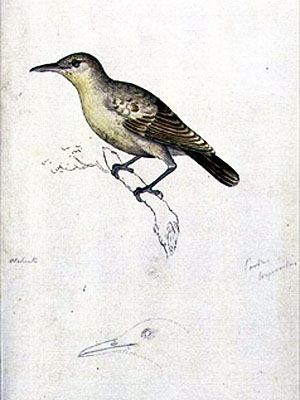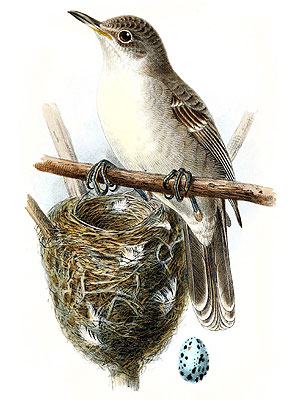Aguiguan Reed-Warbler (Acrocephalus nijoi)
This species, formerly considered a subspecies of the Nightingale Reed-Warbler (Acrocephalus luscinius (Quoy & Gaimard)) from Guam, is restricted to the tiny island of Aguiguan (also known as Aguigan or Aguijan; or Goat Island), which lies to the south of Saipan in the Mariana Islands chain. [3][4]
***
The Aguiguan Reed-Warbler differs from the Nightingale Reed Warbler by its much less warm-toned upperparts, the darker flanks and belly, and the slightly shorter bill. [3]
***
The island of Aguiguan is overrun with introduced goats, an eradication program conducted in 1990 was only partially successful, and the goat population on Aguijan in 1998 remained at an estimated 1500 animals. The feral goats affect the native forest by causing severe erosion and removing the understory, which is becoming dominated by the aggressively invasive Shrub Verbena (Lantana camara L.).
The reed-warbler population was estimated at only about four to 15 birds in the mid-1980s. [1]
The species was believed extinct since 1985, but was rediscovered in 1992, when two males were heard singing [2]
The Aguiguan Reed-Warbler was not seen since and is now believed to be probably finally extinct. [5]
*********************
References:
[1] J. Engbring; F. L Ramsay; V. J. Wildman: Micronesian forest bird survey, 1982: Saipan Tinian, Aguijan, and Rota. U.S. Fish and Wildlife Service Report 1986
[2] Robert J. Craig; Ravi Chandran: Wildlife species recorded during the Aguiguan Expedition: 20-25 May, 1992. In: Robert J. Craig: The Aguiguan Expedition. Proceedings of a Symposium held at Northern Marianas College 1993
[3] Peter Kennerly; David Pearson: Reed and Bush Warblers. Christopher Helm 2010
[4] Takema Saitoh; Alice Cibois; Sayaka Kobayash; Eric Pasquet; Jean-Claude Thibault: The complex systematics of the Acrocephalus of the Mariana Islands, western Pacific. Emu 112(4): 343–349. 2012
[5] Fred Amidon; Richard J. Camp; Ann P. Marshall; Thane K. Pratt: Terrestrial bird population trends on Aguiguan (Goat Island), Mariana Islands. Bird Conservation International 24(4): 505-517. 2014
*********************
edited: 02.10.2020




